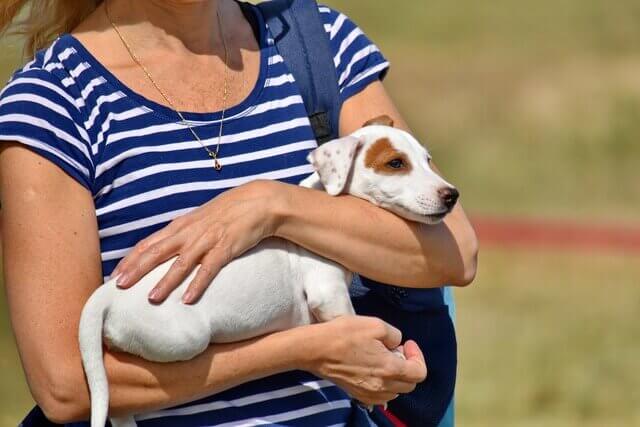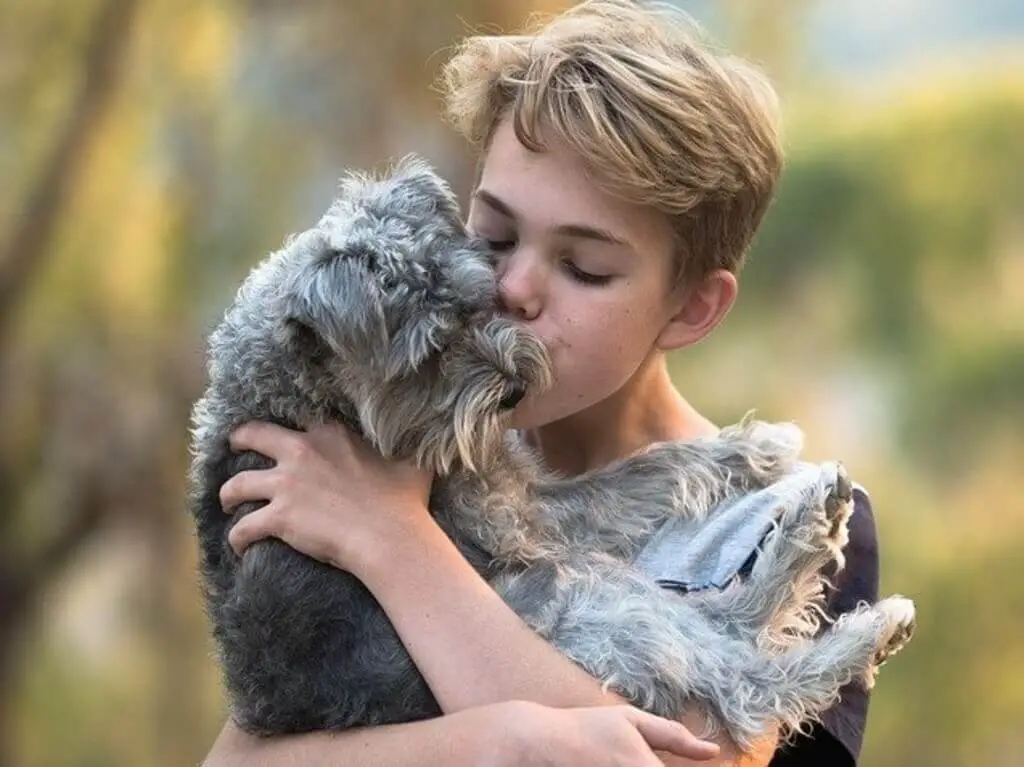Look, we’ve all been there. You see an adorable Chihuahua or Yorkie, your heart melts, and suddenly you’re reaching down like you’re grabbing a loaf of bread. Stop right there. Those tiny furballs aren’t inanimate objects, and picking them up wrong can seriously hurt them or turn you into their least favorite human. Trust me, I learned this the hard way when my friend’s Pomeranian gave me the stink eye for weeks after I botched a pickup attempt.
That’s why knowing How To Properly Pick Up A Small Dog matters more than people realize. It’s both an art and a science. These pint-sized pups might look sturdy, but they’re actually more delicate than you think. Their bones are thinner, their joints are smaller, and their trust? Well, that’s something you definitely don’t want to break.
Why Proper Small Dog Lifting Technique Matters
Ever wondered why some dogs love being picked up while others act like you’re attempting grand theft canine? It all comes down to technique and trust.
Small breeds like Maltese, Cavalier King Charles Spaniels, and Dachshunds have specific anatomical considerations. Their ribcages are narrower, their spines need extra support, and grabbing them wrong can cause everything from minor discomfort to serious injury.
I remember watching someone at the dog park literally scoop up a Shih Tzu like they were collecting dirty laundry. The poor pup yelped, the owner wasn’t happy, and honestly, I felt secondhand embarrassment for everyone involved. Don’t be that person.
Here’s what can go wrong with improper dog handling:
• Rib injuries from squeezing too tight around the chest
• Back problems from lack of spine support
• Shoulder dislocation from pulling on the front legs
• Fear and anxiety that makes future handling difficult
• Behavioral issues like snapping or hiding
The Golden Rules of Small Dog Pickup
Rule #1: Always Ask Permission (From the Dog AND Owner)
This might sound obvious, but you’d be surprised how many people just grab without thinking. Never pick up someone else’s dog without permission. Some small dogs have medical conditions, behavioral issues, or are simply having an off day.
For your own dog, watch their body language. Are they relaxed? Wagging? Or are they showing signs of stress like panting, trembling, or trying to move away?
Rule #2: The Two-Hand Rule is Non-Negotiable
Here’s where most people mess up. They use one hand under the chest and let the back end dangle. Wrong, wrong, wrong. Small dogs need full-body support every single time.
Your approach should be: • One hand supporting the chest (behind the front legs) • Other hand supporting the hindquarters • Both hands working together as a unified lifting system
Rule #3: Keep Them Close to Your Body
Once you’ve got them up, don’t hold them out like you’re showing off Simba from The Lion King. Keep them close to your chest where they feel secure and you have better control.
The Step-by-Step Perfect Pickup Technique
Getting Into Position
First things first – get down to their level. Squatting or kneeling shows you’re not this towering giant about to snatch them up. It’s less intimidating and gives you better leverage.
Position yourself beside or slightly behind the dog, not directly in front where you might seem threatening. Let them see what you’re doing – transparency builds trust.
Hand Placement That Actually Works
This is where the magic happens. Your dominant hand goes under their chest, right behind those front legs. Think of it as creating a little shelf for their ribcage to rest on. Your fingers should be spread to distribute weight evenly.
Your non-dominant hand slides under their bottom, supporting their hindquarters and back legs. This isn’t just about comfort – it’s about preventing back injury and keeping their spine aligned.
Pro tip: If you’re dealing with a long-backed breed like a Dachshund, you might need to adjust your hand placement to provide extra spine support along their back.
The Lift Itself
Ready for liftoff? Here’s how you do it without making your pup feel like they’re on a sketchy carnival ride.
Lift smoothly and slowly. No sudden movements that might startle them. Think elevator, not rocket ship. Keep their body horizontal – tilting them nose-up or tail-up throws off their balance and can be uncomfortable.
As you stand up, bring them closer to your chest. This creates a secure feeling and gives you better control if they decide to wiggle.

What NOT to Do (Common Mistakes That Drive Me Crazy)
Let’s talk about the pickup fails I see way too often. Never, ever grab a small dog by:
• Their front legs or “armpits” – this can dislocate shoulders
• The scruff of their neck – they’re not puppies anymore
• Around their belly with one hand – zero back support
• Their tail – seriously, why would anyone think this is okay?
I once saw someone try to pick up a Papillon by its ears. Its ears! The poor dog was traumatized, and honestly, so was I.
The “Grab and Go” Mistake
Another thing that makes me cringe? The rushed pickup. You know, when someone quickly scoops up a dog without warning because they’re in a hurry. This creates anxiety and fear around being handled.
Take your time. Let the dog know what’s happening. A calm, deliberate approach builds trust and makes future pickups easier.
Special Considerations for Different Small Breeds
Flat-Faced Breeds (Pugs, French Bulldogs)
These brachycephalic breeds can have breathing issues, so avoid putting any pressure on their throat or chest area. Support them more from underneath and keep sessions brief – they can overheat quickly.
Long-Backed Breeds (Dachshunds, Corgis)
IVDD (Intervertebral Disc Disease) is a real concern here. Always support their entire spine length and never let their back end hang free. Think of them as a hotdog that needs full-length support 🙂
Toy Breeds (Chihuahuas, Yorkshire Terriers)
These tiny guys can be more fragile than they look. Use extra gentle pressure and watch for signs of stress. Some toy breeds can be nippy when scared, so go slow and build confidence.
Teaching Kids the Right Way
FYI, if you’ve got kids in the house, teaching them proper small dog handling is crucial. Children often want to pick up small dogs like teddy bears, which can end badly for everyone involved.
Make it a rule: kids sit down before the dog comes to them. This eliminates the risk of dropping and makes the interaction feel less overwhelming for the pup.
Show them the two-hand rule and supervise until they’ve got it down pat. Trust me, it’s worth the investment in training time.
Building Trust Over Time
Here’s something most people don’t think about – conditioning your dog to enjoy being picked up. Start with short sessions and always end on a positive note.
Practice when they’re calm and relaxed, not when they’re excited or stressed. Reward them with treats or praise when they cooperate. Over time, they’ll associate being picked up with good things happening.
Some dogs will never love being picked up, and that’s okay. Respect their boundaries and find alternative ways to move them when necessary.
When NOT to Pick Up Your Small Dog
Sometimes the best pickup is no pickup at all. Avoid lifting your small dog when they’re:
• Eating or drinking – they might get defensive
• Playing with other dogs – interrupting can create behavioral issues
• Showing signs of illness or pain – could worsen their condition
• Sleeping – nobody likes being startled awake
Also, consider if picking them up is really necessary. Are you doing it for their safety, or just because they’re cute and you want to cuddle? Independent small dogs benefit from walking and exploring on their own terms too.
Making It a Positive Experience
Want to know the secret to having a small dog that actually enjoys being picked up? Make it awesome for them every single time.
Keep a few high-value treats handy and give one right after you pick them up. This creates a positive association. Some dogs even learn to ask to be picked up once they realize good things happen when they’re in your arms.
Consistency is everything. If multiple people in your household pick up your dog, make sure everyone uses the same technique. Mixed signals confuse dogs and can create anxiety around handling.
The Bottom Line
Look, properly picking up a small dog isn’t rocket science, but it does require attention to detail and respect for your furry friend. These little guys depend on us to handle them safely, and honestly, they deserve nothing less than our best effort.
Remember the fundamentals: two hands, full body support, slow movements, and always consider their comfort first. Your small dog will thank you with trust, affection, and hopefully fewer attempts to hide under the couch when they see you coming.
IMO, mastering this skill is part of being a responsible small dog owner. It keeps them safe, builds your bond, and prevents those awkward moments when your pickup technique makes other dog parents quietly judge your handling skills.
So next time you reach for that adorable little furball, take a breath, use both hands, and show them the respect they deserve. Trust me, they’ll notice the difference, and so will everyone watching.


